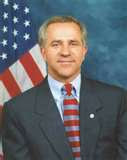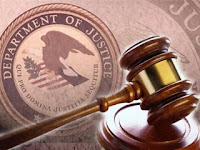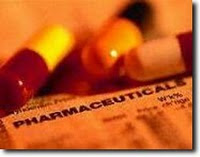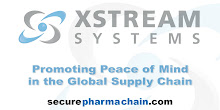 On August 17th Postscript Community Catalyst Kate Petersen blogged about Rep. Steve Buyer’s (R-IN) exchange with FDA officials in July at a Energy and Commerce Subcommittee hearing on antibiotic drug resistance in farm animals.
On August 17th Postscript Community Catalyst Kate Petersen blogged about Rep. Steve Buyer’s (R-IN) exchange with FDA officials in July at a Energy and Commerce Subcommittee hearing on antibiotic drug resistance in farm animals.
This blog has the text of the testimony of Rep. Buyer, engaging in some animated exchanges with FDA officials over the state of pharmaceutical counterfeits in the United States.
Rep. Buyer has established for himself a reputation as a watchdog on counterfeit drug issues. In 2008, he joined with Rep. Jim Matheson (D-UT) to introduce the Safeguarding America’s Pharmaceutical Act.
Below are highlights from this portion of the hearing:
Mr. {Pallone.} Next is the gentleman from Indiana, who has 8 minutes. Mr. Buyer.
Mr. {Buyer.} Thank you very much. Dr. Clifford, I have a question that deals with adulterated, counterfeit, knockoff drugs. We have a problem in our country, and countries around the world are challenged by this. Do you see any escalation or any evidence of adulterated counterfeit drugs in animal health?
Dr. {Clifford.} Congressman, since this really falls under FDA’s jurisdiction, I would have to turn to them to answer that question.…
Dr. {Sharfstein.} For animal health, I think we are going to have to get back to you. I am not prepared to answer that. I have not heard of a significant counterfeit problem in the United States but I want to make sure and get back to you.
Mr. {Buyer.} You know, as our problem is growing, it is only time before it migrates. It is going to follow the money, right? Bad guys follow the money. And that is why I asked the question.
I want to thank the FDA for continuing the blitzes that you are doing at international mail facilities, so thank you for doing that. You are trying to “get the word out” to Americans that if you go on the Internet and you think that that is an approved website to order your pharmaceutical products, that you are really playing Russian roulette with your life, and so thank you for keeping these blitzes going and trying to get the word out. I noted in your testimony when you were with us in March, you had in your testimony, “Protecting Americans from unsafe or contaminated drugs is not just an important responsibility of the FDA, it is our core charge.” Do you agree with that today?
Dr. {Sharfstein.} I do believe that. I think it is one of the reasons that FDA—
Mr. {Buyer.} So–
Dr. {Sharfstein.} –was established.
Mr. {Buyer.} You also then in your testimony talked about FDA must adopt a new approach. Now, I think when you talked about your new approach, also you were concerned about the production, i.e., raw ingredients, that are used within our supply chain for which people are buying at retail outlets within the gold standard of our own country. So ensuring that we maintain that gold standard, you are putting your eyes on that supply chain and production. I don’t have any problems with that. I think that is wonderful. I think the Administration is doing what it is supposed to do. I applaud you with regard to your striking the agreements with other countries, putting more inspections on other soils. That is awesome.
…Now, as we are doing this, we have got both of these going on at the same time, is we are trying to then do our electronic pedigree, and Mr. Dingell has a bill, and we are going to do work and do this electronic pedigree, but let me tell you what I was bothered about what I read in the Miami Dade about your last blitz. I think it is great. Like I said, you are doing the blitz. You did a 3-day blitz. You did everything you were supposed to do, your coordination with Customs, Border Protection, thousands of pieces of foreign mail. You X-rayed them. You separated them. You identified them, the suspicious pharmaceutical products. You ID’d them. You showed how many of them were counterfeit and knocked off, and then you sent them back.
America has to be shocked, and the counterfeiters have to be excited that America is a place where you can counterfeit your drugs, send them to America, steal people’s money, and the American government will send the counterfeit drugs back to you so you can then send them to someone else that you can steal more money from. This is like one of the dumbest policies I think we have in this country…
I know you have got to be uncomfortable with that as a policy. Are you?
Dr. {Sharfstein.} Yes. I mean, I have spoken to some of the inspectors who are, you know, as frustrated as you are.
Mr. {Buyer.} All right. Now, if you are willing to step into a new–and that was your testimony that you gave to us in March, that you embrace and wanted to adopt a new approach with regard to the raw ingredients, through production and distribution always to U.S. consumers, I think I have an opportunity. I think, Mr. Dingell, we have an opportunity to help protect America, and that is embrace what the FDA is saying here, Mr. Dingell, and let us figure out how we can destroy these when they are identified, when your inspectors identify them. Let us not send them back to the counterfeiters so they can continue to rip off people. You know, Doc, come on, they are preying upon the most vulnerable of our population, which is awful. Would you be willing to work with Mr. Dingell and I to come up with a policy here that can give your inspectors the ability to destroy these counterfeit, knockoff, adulterated drugs?
Dr. {Sharfstein.} Yes, and I believe we have been already starting that process by working with your staff and Congressman Dingell’s staff on this issue.
Mr. {Buyer.} All right. Well, I want to be as proactive as we possibly can. John Dingell, to his credit, started this a long time ago with his paper pedigree, and he has always had a great interest. It goes all the way back many years into the 1970s, and I applaud what he has done. I think he has got to be pretty shocked on where America is today compared to where we were in the 1970s, and as a policy and I know you adopted this, I was just as frustrated with the last Administration but I am embracing your spirit, and if we are able to move ahead, Mr. Dingell, I want to join with you today and I want to work with the FDA and I want to resolve this matter. I want to yield to the chairman for a second.
Mr. {Dingell.} I thank the gentleman. He is most kind to me, and I want to thank him for the kind comments he has made about me. I want to assure him that my assurances of the last Congress, I would be happy to work with him, and I happen to agree with the gentleman about the problem of imports, about tracing pharmaceuticals and other drugs, and I am pleased to report to the gentleman that very shortly we will be circulating a draft for comments about pharmaceutical safety, and I hope that the gentleman when that occurrence happens that he will look at it with sympathy and I look forward to working with him because he is a valuable member of the committee, and I thank him.
Mr. {Buyer.} I thank the gentleman. The last, can I do this piece of math? Thirteen-
-
Mr. {Pallone.} The gentleman’s time has expired, but all the love–
Mr. {Buyer.} I ask unanimous consent for 30 seconds.
Mr. {Pallone.} Yes, with all the love and bipartisan here–
Mr. {Buyer.} God bless you.
Mr. {Pallone.} I certainly don’t want to stop the gentleman.
Mr. {Buyer.} Thirteen international mail facilities, on average 35,000 are pharmaceutical packages, times 365 days, that is 1,666,075 packages a year. If 80 percent are counterfeit, adulterated or knocked off, that means there are 132,860 pharmaceutical packages that are coming into the country that are either adulterated, counterfeit or knockoff, and people are taking these and they are not metabolizing in the body in ways in which as doctors you intend.
With that, I yield back.
 On August 17th Postscript Community Catalyst Kate Petersen blogged about Rep. Steve Buyer’s (R-IN) exchange with FDA officials in July at a Energy and Commerce Subcommittee hearing on antibiotic drug resistance in farm animals.
On August 17th Postscript Community Catalyst Kate Petersen blogged about Rep. Steve Buyer’s (R-IN) exchange with FDA officials in July at a Energy and Commerce Subcommittee hearing on antibiotic drug resistance in farm animals.





























